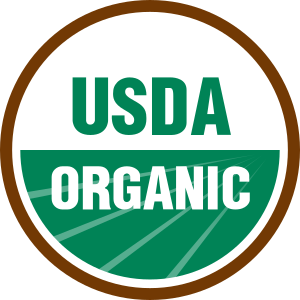 Image via Wikipedia
Image via WikipediaHave you ever been in a Whole Foods Supermarket or other store and found yourself bogged down with a mountain of terms relating to natural and whole foods? Many have-including myself.
This post will present information as to how to decode all the health food jargon and make healthier choices for your family and yourself.
Making sense of it all
All products labeled as organic must be certfied by a USDA accredited agency. These may be state,non-profit or private agencies that have been approved by the USDA.
Below is a list of the three designations applied to foods.
100% Organic
These are products that must contain only organically produced material, excluding water and salt. Use of the USDA organic seal is optional.
Organic
95% of the product must contain organically produced ingredients. The remainder must consist of nonagricultural substances approved on the USDA's National list of non-organically produced products that are not commercially available in organic form. The label should also list the percentage of organic ingredients. The name of the certifying agency must be listed on the package.
Made with Organc Ingredents
Product must contain at least 70% organc ingredients. The remainder can consist of conventionally grown agricultural ingredients or approved nonagricultural substances from the USDA National list.
Product may display the label, "Made with Organic.." and then list up to three of the product's organic ingredients or types of food.
The name of the certifying agency must be on the package. Use of the seal is optional..
As more and more people opt to go with whole foods, more designations will be forthcoming..
Sources:
"Organics and You" http://www.wholefoodsmarket.com/

Organic labels and their cousins abound. Here's a look at some of the most important labels consumers will see in grocery stores.
ReplyDeleteThere are so many terms that it really takes so time to learn about them all.
ReplyDeleteThanks for the comment.
An organic label is just a label. The USDA Organic Seal is a privilege of certified products.
ReplyDeleteAll blogs are very nice to see. It give nice information.It is very useful for me.
ReplyDeleteOrganic labels and their cousins abound. An overview of some of the leading brands consumers see in grocery stores.
ReplyDeleteBrilliantly written article!I am satisfied by the material which you have on this weblog.It exhibits how very well you grasp this topic.
ReplyDeleteThank you for your supportive comments.
ReplyDeleteI do not know about this topic....thanks for giving info related to this.....
ReplyDeleteThis is all very important, right? But truthfully at the end of the day or the beginning of my grocery shopping, I just want to know whether the food is healthy, easy on the environment and ethically produced.
ReplyDeleteThese are products that must contain only organically produced material, excluding water and salt. Use of the USDA organic seal is optional.
ReplyDeleteProduct may display the label, "Made with Organic..and then list up to three of the product's organic ingredients or types of food.
ReplyDeleteThese are products that must contain only organically produced material, excluding water and salt. Use of the USDA organic seal is optional.
ReplyDeleteAll products labeled as organic must be certfied by a USDA accredited agency. These may be state,non-profit or private agencies that have been approved by the USDA.
ReplyDelete